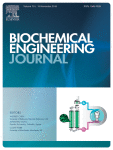|
Authors
Martínez-Monge, I.; Comas, P.; Triquell, J.; Casablancas, A.; Lecina, M. ; Paredes, C. J.; Cairó, J. J. ; Paredes, C. J.; Cairó, J. J.
|
Abstract
The rapid consumption of large quantities of glucose in conventional CHO batch processes yields large quantities of lactate, leading to the inhibition of cell growth. We have observed that under certain culture conditions, CHO cells are able to co-metabolize glucose and lactate, even during the growth phase.
Taking advantage of this metabolic behavior, a new batch process has been defined where there is a concomitant consumption of glucose and lactate from the beginning of the culture. This batch process requires the addition of lactate to the culture media as well as keeping the pH around 6.8. As a result, an exponential growth phase without lactate production together with a substantially diminished glucose consumption is achieved.
Flux Balance Analysis (FBA) confirmed that in glucose consumption/lactate generation, most of the pyruvate generated through glycolysis is converted to lactate to fulfill the NADH regeneration requirements into the cytoplasm, whereas only a 31% of pyruvate enters the TCA through acetyl-CoA. In contrast, in glucose-lactate concomitant consumption, glucose uptake is reduced up to 3-fold, balancing glycolysis and TCA cycle fluxes and thus yielding to a more efficient substrate consumption. Such metabolic behavior in which glucose and lactate are simultaneously consumed from the beginning of the culture has never been reported in CHO cell cultures, and it is promising for the design of new culturing strategies in batch, fed-batch or perfusion processes.
|

WoS
Scopus
Altmetrics
 
|
